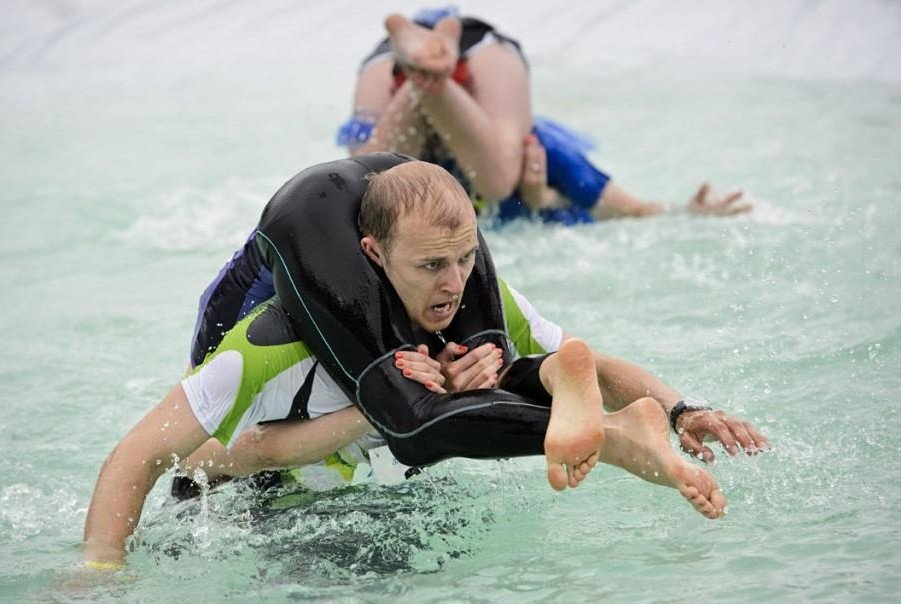In a boon to Estonia’s chances for capturing Olympic gold, the International Olympic Committee (IOC) has announced the addition of wife-carrying to the 2016 summer Olympics schedule. The backbreaking race will join other time-honoured events, including water polo, badminton and trampoline.
A team sport, wife-carrying simply consists of a male competitor carrying a female competitor through an obstacle course lined with dry and water-filled hazards. Team members need not be officially married, but must show trust in one another and be able to remember their anniversary date. The team crossing the finish line in matrimonious glee and with the best overall time wins the race. No judges are involved and no points are available for style.
However, style matters immensely. Wife-carrying style, or technique, comes in several forms and the merits of each are debated heavily in pubs around Scandinavia. Dearest to the Estonians is the Estonian-carry, where the wife locks her thighs around the husband’s head and neck and then dangles her body so her chest is resting on his back. Other tactics include standard piggyback and the fireman’s carry, so named because the pose resembles a fireman carrying a damsel in distress from a burning building. Somewhat controversial, and still in consideration by the IOC, is the “upside down chivalry ferry” where the wife carries the husband.
Up to this point, if a wife-carrying team wanted to prove their worth and test their mettle, the sport’s world championships were held yearly in Sonkajärvi, Finland. Now, with the addition of Olympic gold, silver and bronze medals in 2016, many teams are setting their sights on Rio de Janeiro. The Estonians were crowned World Champions from 1998 through 2008. However, after a string of bad luck between Estonian teammates, including a nasty public fight over snoring and a spat over whether to place the toilet paper flap under or over, the Finns have won every event since 2008.
Hence, the added pressure to the proud wife-carrying Estonians. Already in the top 10 of all-time Olympics medals per capita, according to research by medalspercapita.com, wife-carrying represents a chance to advance along this important indicator of national self worth. But will past success translate to a photo-op on the winner’s podium?
Estonia’s new prime minister, young and sporty Taavi Rõivas, thinks so. Speaking to reporters from Toompea castle shortly after the IOC announcement, Rõivas said his administration is drawing up plans for a state-of-the-art wife-carrying practice facility. To be constructed in Pärnu, the facility will include a replica 253-metre track, a co-ed sauna and an on-call marriage counsellor. Welcoming visitors to the facility, an Estonian American artist Mark Kostabi has been commissioned to construct a wife-carrying sculpture made from birch logs, potatoes and beer kegs.
I
Cover photo: Alar Voogla and Kristi Viltrop competing for Estonia in 2013, they finished second (Wikimedia Commons). * Please note that this was originally published as April Fool’s Day article.

